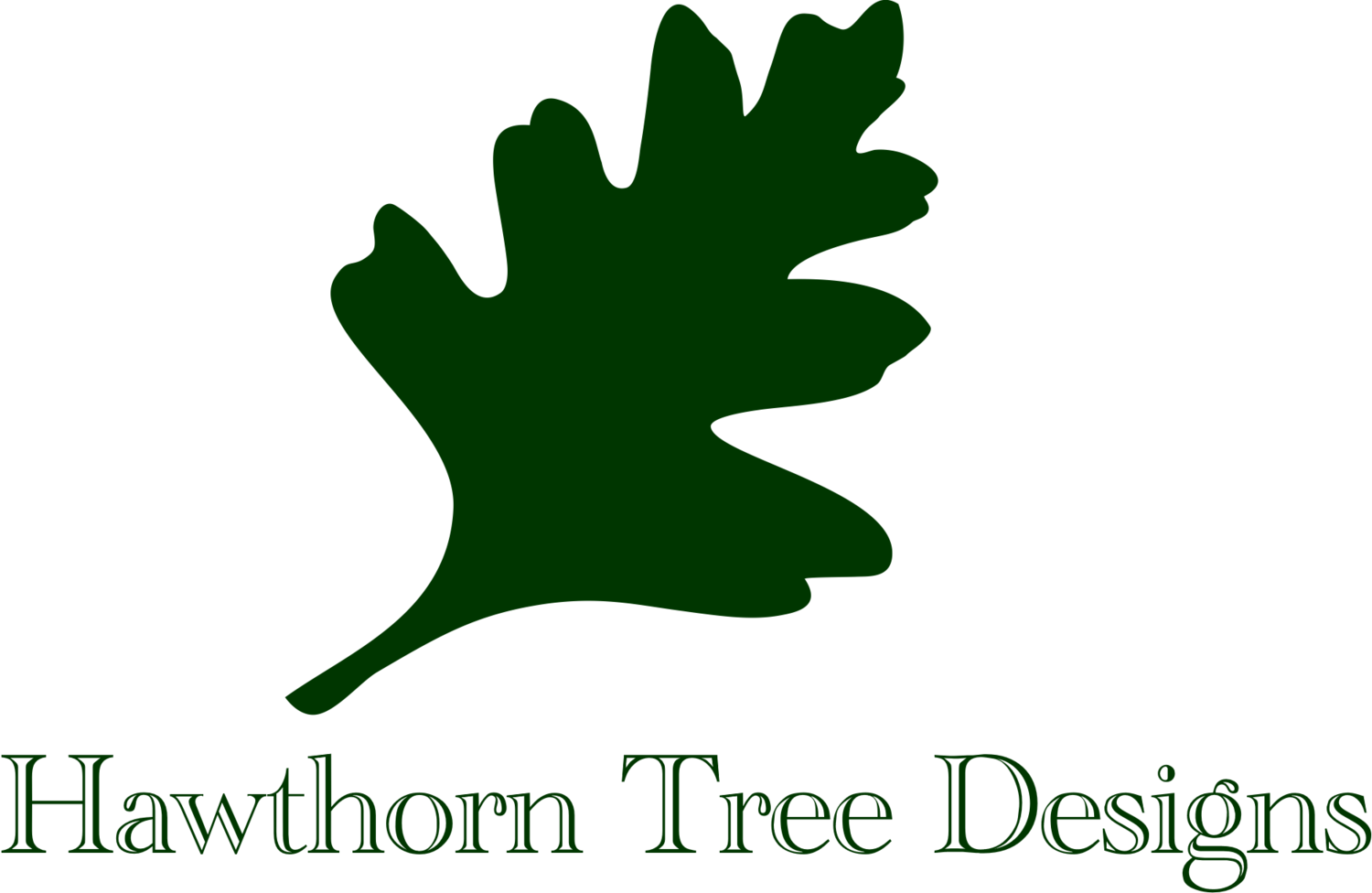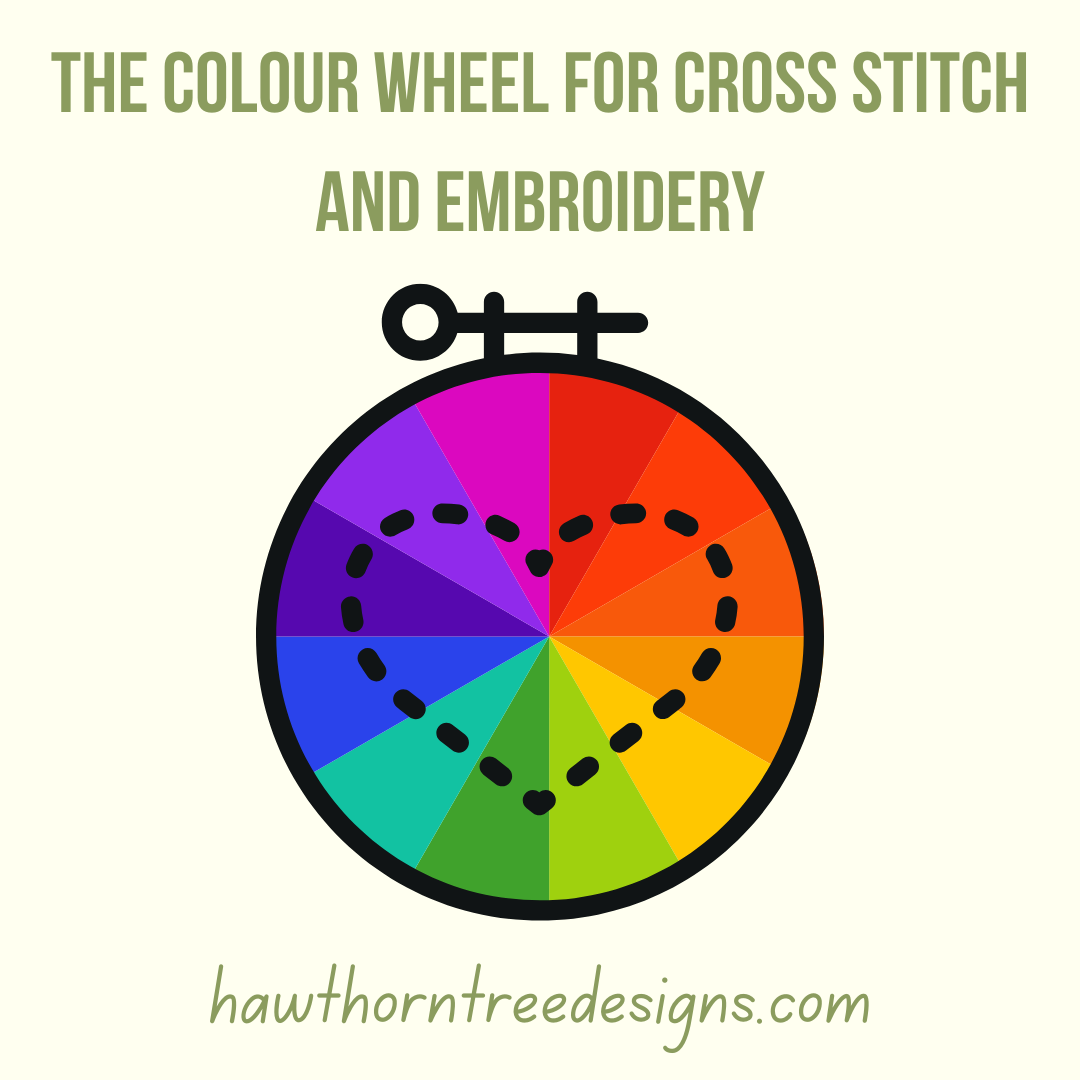Using the Colour Wheel for Cross Stitch and Embroidery (DMC floss)
What is the colour wheel?
The colour wheel is a simple (and very pretty!) tool we can use to help us find colour harmonies. Colour harmonies are groups of colours that work well together and these are an essential part of good design. They can help us create art that inspires a particular reaction in the person who views it.
There are different types of colour harmonies that the colour wheel can help us create. So how does the colour wheel actually work?
The traditional colour wheel has 12 colours in it. There are three primary colours: red, yellow and blue. These can be combined to create three secondary colours: green, orange and purple. The other six colours are tertiary colours: amber, vermilion (red-orange), magenta, violet, teal and chartreuse (yellowish green). Each of these colours is called a hue.
A traditional colour wheel has 12 colours
Hues, tints, tones and shades
The wheel can be divided into two halves, with warm hues on one side and cool hues on the other. Each hue can also be warm or cool. For example, if a green has more blue than yellow, it is a cool hue; if a green has more yellow than blue it is a warm hue.
A saturated hue is one that is vibrant, like the colour of red we see on post boxes in the UK. Hues can be made more #’muted by mixing them with their complementary colour or by changing its value.
Hues can be given different values (be made darker or lighter) by using tones, tints and shades. A tint is a hue mixed with white, tones are hues mixed with grey, and shades are hues mixed with black.
Complementary hues are opposite each other on the colour wheel, for example red and green.
Analogous hues are next to each other on the wheel; this is what we see in gradients.
Triadic hues are three colours which are set equally apart on the wheel.
Tetradic hues are four colours which are set equally apart on the wheel.
Monochromatic hues are different values of the same colour.
Using DMC floss colours
There are 500 solid colours in the DMC range, which can be overwhelming when you see them all in your local craft store or online. So how do you decide which ones to use for your project? Now you know how to use the colour wheel, this will give you some ideas.
I’ve created a free mini colour wheel cross stitch pattern that you can download and start stitching straight away. If you don’t have the exact colours you may have other that will work just as well. The design fits perfectly into a 3-inch hoop, or you could just stitch it onto a square of fabric and keep it with your stash.
Because I make cross stitch patterns as my job, I use DMC’s colour card to help me create my designs, alongside the colours I have in my stash. I use it virtually every day but if you only make your own designs occasionally you probably don’t need to make the investment. However, we can use it here as a good illustration of the range of tints, tones in each hue, as well as cool and warm variations.
You can find inspiration for colour combinations in many places. Nature is an expert on colour harmonies so you have a good look around you whenever you’re outside and take note of what you see. For example, think of how many times you’ve seen purple and green together: lavender, geraniums, bluebells, heather, etc.
Birds are one of my favourite subjects. The blue tit’s plumage is made of analogous hues of yellow, green and blue.
Sometimes nature makes surprising choices, like the multi-coloured Gouldian finch, which is native to Australia.
If you already have a stash of floss, this is the perfect excuse to get it out and play around with different combinations. If you’re looking to get into cross stitch, you now know how to make great colour combinations for your projects. How about starting with your favourite colours and going from there?
Click here to see some of my colourful cross stitch patterns.
Either way, happy stitching!






